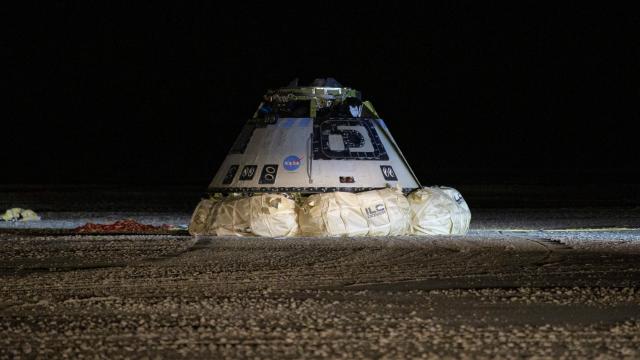Boeing is calling a mulligan on the failure of its CST-100 Starliner spacecraft to reach proper orbit in an unmanned test for NASA last year and will conduct another before it tries to use it to launch astronauts, the Washington Post reported Monday.
Alongside competitor SpaceX’s Crew Dragon, the long-delayed Starliner is part of NASA’s Commercial Crew Program, the project to replace the retired Space Shuttle and allow NASA astronauts to reach space without renting seats on Russian Soyuz rockets. An unmanned variant of the Starliner failed to reach the International Space Station in December 2019 due to “fundamental” software glitches, further delaying a second, manned test; the Crew Dragon already passed its unmanned test and is on track to hold a manned test in the coming months.
According to the Post, the problems with the Starliner have proven so severe the repeat test isn’t expected until October or November, making it unlikely that it will progress to manned testing before 2021. Boeing is also taking a $US410 ($674) million charge due to the delays and extensive work needed to fix the design problems identified during the first test.
[referenced url=” thumb=” title=” excerpt=”]
In a statement, NASA wrote it “has accepted the proposal to fly the mission again and will work side-by-side with Boeing to resume flight tests.”
“If Boeing would have proposed a crewed mission as the next flight, NASA would have completed a detailed review and analysis of the proposal to determine the feasibility of the plan,” NASA added. “However, as this was not the recommendation made by Boeing, NASA will not speculate on what the agency would have required.”
The first of the two major software glitches during the bungled test occurred shortly after launch, when the Starliner used the wrong clock while separating from its Atlas V rocket and burned too much fuel to reach (let alone dock with) the ISS. Another glitch shortly before it reentered the atmosphere was called a “high-visibility close call” by NASA chief of human spaceflight Doug Loverro, according to Ars Technica.
That glitch was discovered in the middle of the mission and averted, though if it hadn’t been caught the Starliner might have been damaged while landing. NASA said it had identified “numerous instances where the Boeing software quality processes either should have or could have uncovered the defects,” with possible consequences including “spacecraft loss.” (SpaceX’s Crew Dragon has had its own issues, though not during launches to space.)
In a statement to the Post, Boeing wrote that performing a second unmanned test “will allow us to complete all flight test objectives and evaluate the performance of the second Starliner vehicle at no cost to the taxpayer. We will then proceed to the tremendous responsibility and privilege of flying astronauts to the International Space Station.”
According to CNN, a “person familiar with the matter” said that Boeing could conceivably have another CST-100 Starliner lined up to launch the manned mission shortly after a successful redo. Both Boeing and SpaceX’s spacecraft were supposed to be ready in 2017.
